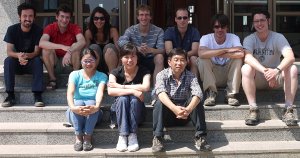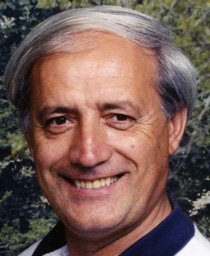I have uploaded lecture notes entitled Around the circular law written with Charles Bordenave (hal-00623894 & arXiv:1109.3343). These lecture notes are the expanded version of a joint course that we gave at the occasion of the France-China summer school held in Changchun. They incorporate some posts from this blog. It was a great pleasure for us to write down this synthesis, accumulating few years of thinking on the subject, sometimes with our friend Pietro Caputo (I will remember this stimulating week in Rome!). I hope to reduce my time turning around the circular law in 2012, even if I am still fascinated by few of the open problems 😉

Girko (1946 - ) contributed substantially to the solution of the circular law problem. His interest in random matrices came from his early works on random determinants, motivated at the origin by the van der Waerden conjecture: among all \(n\times n\) doubly stochastic matrices, the matrix with all entries equal to \(1/n\) has minimal permanent. It turns out that the van der Waerden conjecture was solved around 1980 by another Ukrainian mathematician: Falikman. Personally (author of this blog), I have two favorites (still open) problems on doubly stochastic matrices:
- find an exact representation of the uniform law on the polytope of doubly stochastic matrices (similar to what we have for the \(\ell^1\) ball with i.i.d. exponentials),
- show that the empirical spectral distribution of random doubly stochastic matrices (distributed according to the uniform law) tends to the circular law.
This is why I came to random matrix theory... A proof of the van der Waerden conjecture can be found in the last chapter of the book Matrix inequalities by Zhan. Coincidentally, this book contains also somewhere (proof of theorem 3.32) an inequality (for singular values and rows norms) which turned out to be a crucial ingredient in the solution of the heavy tailed analogue of the circular law theorem (obtained in collaboration with Bordenave and Caputo). I knew this book from my postdoc (by simple curiosity), but it became useful only ten years later!
Van der Waerden is famous for his heorem in Ramsey theory about the structure of integers.
